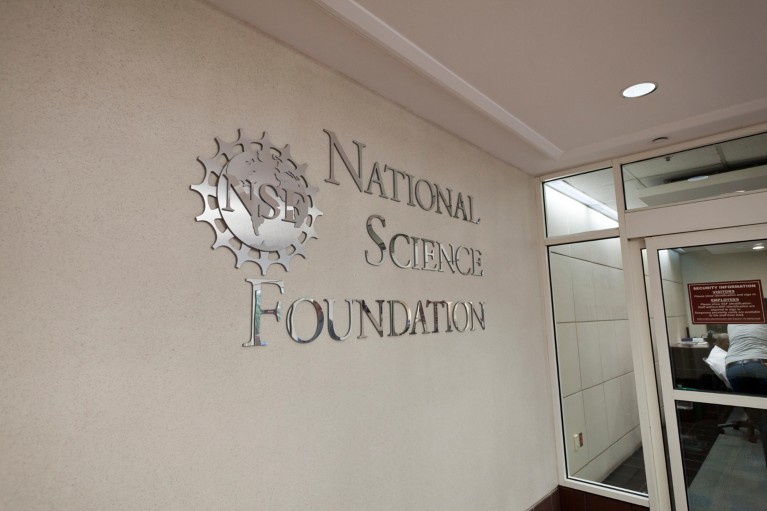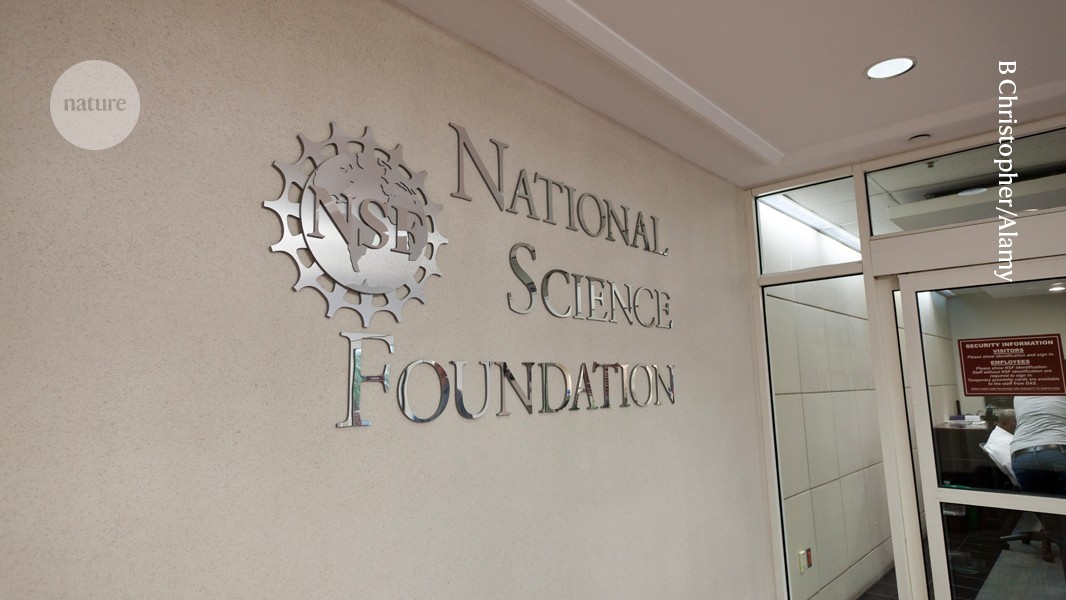
The National Science Foundation has suspended its plans to set a blanket rate for all overhead-cost funding on research grants.Credit: B Christopher/Alamy
The US National Science Foundation (NSF) has paused a policy that threatened to cost universities hundreds of millions of dollars a year in ‘research overhead’ payments. The suspension, announced last Friday, follows freezes of similar policies at the US National Institutes of Health (NIH) and the US Department of Energy (DoE).
The NSF announced on 2 May that it would cap overhead payments on new research grants at 15% and was swiftly sued by a coalition of 13 US universities and 3 academic associations seeking to stop the policy. The newly announced pause will last until 13 June, when a judge will hear the case. The decision allows the agency to skip a preliminary hearing.
NIH cuts triggered a host of lawsuits: Nature’s guide to what’s next
Since US President Donald Trump took office in January, the NIH, NSF and DoE have all announced that they would cap overhead payments. Groups of academic organizations also sued the NIH and DoE; judges have blocked both agencies from implementing their caps.
Universities argue that the caps are not only illegal, but also devastating to science. The NSF’s cap would threaten the country’s “status as a global leader in scientific research and innovation”, the plaintiffs say.
A spokesperson for the NSF declined to comment on the lawsuit, but acknowledged that the agency has paused the cap.
Here, Nature looks at what’s at stake and whether the administration is likely to prevail.
What are overhead costs?
Research grants pay for staff salaries and new laboratory equipment — the direct costs of doing science. But agencies such as the NSF and NIH also fund overhead, or indirect costs, including the electricity consumed by research facilities, information-technology support and more.
In 1965, Congress mandated that universities negotiate their overhead rate with either the US Department of Health and Human Services (HHS) or the US Office of Naval Research (ONR). Each university’s rate typically applies to all federal grants it receives.
University rates generally range from 40% to 70% and depend mainly on the institution’s location and the type of research being supported. For a university with a 50% indirect cost rate, for example, a US$100,000 NIH grant would provide $50,000 in further funding for indirect costs.
Where does the 15% number come from?
The NSF did not provide a rationale. Some wealthy private foundations provide an overhead rate of 15%, but say that they pay lower indirect rates than the government does because they expect the government to support overhead. Some foundations, such as the Gates Foundation in Seattle, Washington, often consider overhead to be part of direct costs.
Why did the NSF cap indirect costs?
On its website, the NSF justifies the policy by saying it will force universities to reduce overhead costs, thereby improving efficiency. The agency also argues that the change would increase its own efficiency “by eliminating the need for individualized indirect cost negations” and its own effectiveness by devoting more funds to direct research costs.
The latter argument about effectiveness is “not plausible”, says John Walsh, a science-policy researcher at the Georgia Institute of Technology in Atlanta, because any increase of direct expenditures creates more indirect costs. He likens it to a chicken franchise trying to cook twice as much chicken. “You’d need a second fryer,” he says.
Hundreds more NSF grants terminated after agency director resigns
In the lawsuit, universities argue that a 15% cap is simply much too low and would prevent them from carrying out crucial research.




